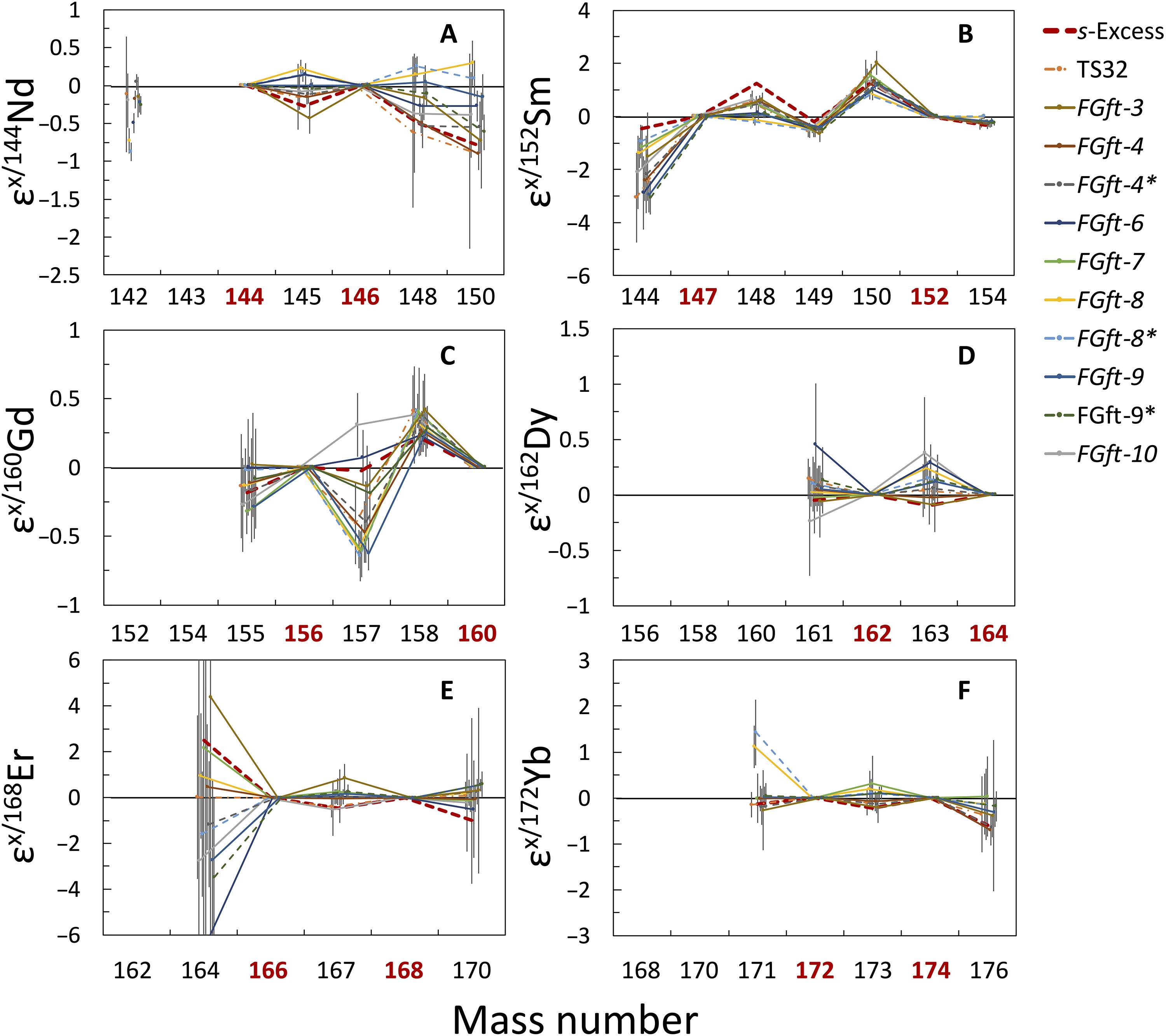原行星盘中稀土元素核合成异常与尘埃输运
IF 12.5
1区 综合性期刊
Q1 MULTIDISCIPLINARY SCIENCES
引用次数: 0
摘要
太阳系天体的大小、密度和化学特征都是由原行星盘阶段的物质传输所决定的。这包括携带核合成异常的难熔尘埃颗粒从太阳系内部传输到外部。在这里,我们发现细粒富钙铝包裹体(CAIs)中的稀土元素(REE)同位素表现出异常,这是由于r -、s -和p -过程核合成的不完全混合造成的。数据点定义了两种相关性,最好的解释是三个同位素储层在两个连续阶段的混合,其中一个阶段涉及p过程成分的可变混合。我们认为CAI前体形成于太阳系内部,随后被猎户座FU的爆发从盘面运送到包络层,在那里它们与同位素不同的储层混合,然后沉淀在中间面。本文章由计算机程序翻译,如有差异,请以英文原文为准。

Rare earth element nucleosynthetic anomalies and dust transport in the protoplanetary disk
The size, density, and chemical characteristics of solar system bodies have been shaped by material transport during the protoplanetary disk stage. This includes transport from the inner to outer solar system of refractory dust grains that carry nucleosynthetic anomalies. Here, we show that rare earth element (REE) isotopes in fine-grained calcium-aluminum–rich inclusions (CAIs) display anomalies stemming from incomplete mixing of r-, s-, and p-process nucleosynthesis. The data points define two correlations, which are best explained by mixing between three isotopic reservoirs in two successive stages, one of which involved a variable admixture of a p-process component. We propose that CAI precursors formed in the inner solar system and were subsequently transported by FU Orionis outbursts from the disk to the envelope where they mixed with an isotopically distinct reservoir before settling on the midplane.
求助全文
通过发布文献求助,成功后即可免费获取论文全文。
去求助
来源期刊

Science Advances
综合性期刊-综合性期刊
CiteScore
21.40
自引率
1.50%
发文量
1937
审稿时长
29 weeks
期刊介绍:
Science Advances, an open-access journal by AAAS, publishes impactful research in diverse scientific areas. It aims for fair, fast, and expert peer review, providing freely accessible research to readers. Led by distinguished scientists, the journal supports AAAS's mission by extending Science magazine's capacity to identify and promote significant advances. Evolving digital publishing technologies play a crucial role in advancing AAAS's global mission for science communication and benefitting humankind.
 求助内容:
求助内容: 应助结果提醒方式:
应助结果提醒方式:


